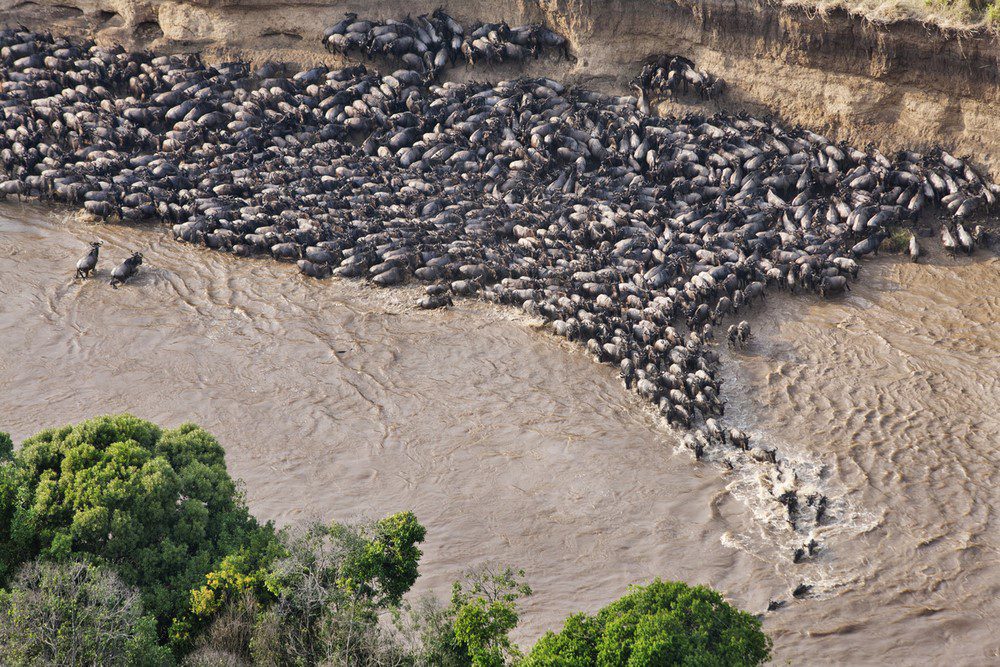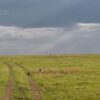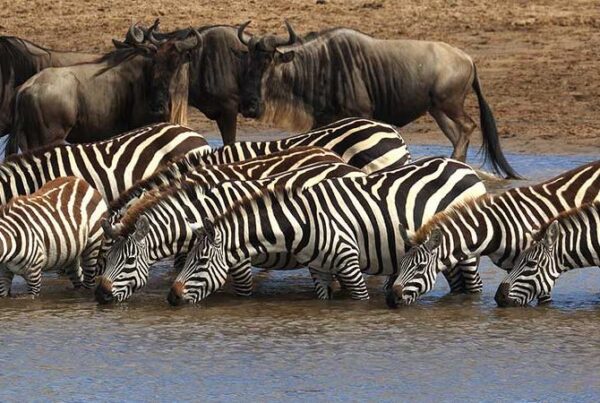Facts About the Wildebeest Migration
The Wildebeest Migration, often referred to as the Great Migration, stands as one of the most extraordinary natural processes on Earth—a dramatic, ceaseless rhythm of life and survival played out across the vast Serengeti–Mara ecosystem. It has been filmed, studied, admired, and written about for decades, yet no words ever seem adequate to fully capture the scale, emotion, and evolutionary brilliance behind this unique spectacle. For many travellers, witnessing it becomes a defining moment in their African journey—one that etches itself into memory with a force as powerful as the thundering hooves that shape the plains below.
Understanding the facts behind the Great Migration offers not only scientific insight but also a deeper appreciation for one of nature’s most enduring wonders. Each fact reveals layers of complexity, ecological significance, and ancient instinct that guide the herds across the savannah. From the extraordinary birth rates to their astonishing navigational abilities, from predator-prey dynamics to the environmental impact created by millions of hooves, the Migration stands as a living testament to the resilience and adaptability of wildlife.
The Scale of the Migration
The first and most fundamental fact about the Wildebeest Migration lies in its sheer scale. The migration involves approximately 1.5 million wildebeests, joined by nearly 300,000 zebras, hundreds of thousands of gazelles, and countless other species that follow the flow of movement. When viewed from a distance, the moving herd resembles a vast, living sea that stretches across the horizon. This mass movement, unmatched anywhere else in the world, represents one of nature’s greatest masterpieces.
The movement is continuous, forming a circular pattern across Tanzania and Kenya. What makes this fact especially compelling is that the migration does not have a true beginning or end. It is a year-round process, driven by rainfall patterns and the need for fresh grazing. Scientists note that the herds can walk up to 1,000 kilometers annually, making the migration one of the longest and most demanding terrestrial journeys undertaken by any species.
The physical endurance displayed by the wildebeests, combined with their instinctual precision, highlights an evolutionary strategy carefully honed over thousands of years. Their numbers, though vast, are essential for survival. The collective movement reduces individual vulnerability, making the herd an evolutionary success story grounded in strength through unity.
The Birth Explosion
A remarkable fact about the migration is the phenomenon observed during the calving season. Each year, between January and early March, close to 500,000 wildebeest calves are born within a span of just a few weeks. This remarkable event transforms the southern Serengeti and the Ndutu plains into one of the world’s largest natural nurseries.
The synchronization of births remains one of nature’s fascinating mysteries. Scientists attribute this phenomenon to evolutionary adaptation. When calves are born simultaneously, predators become overwhelmed by the sheer number of newborns, ensuring that a significant proportion survives these dangerous weeks.
The calves themselves present another astonishing fact. Within minutes of birth, many are able to stand. Within hours, they are capable of running. This immediate mobility is essential, as newborns must quickly integrate into the moving herd for protection. The bond between mother and calf forms instantly and is critical in the harsh savannah environment.
Predators take advantage of the calving season as well. Lions, hyenas, cheetahs, and jackals are frequently seen patrolling the plains in anticipation of vulnerable young wildebeests. Yet despite the dangers, the birth explosion signifies renewal, abundance, and the survival of a species whose entire lifecycle depends on continuous movement.
The Drivers of Migration
Another important fact is that the Wildebeest Migration is governed not by specific seasons or predictable human timelines, but by rainfall. Wildebeests possess an extraordinary ability to sense distant rains, and their movements are guided by the search for fresh, nutrient-rich grasses that grow after these showers.
Unlike many migratory species that follow fixed routes, the wildebeests adjust their paths based on the availability of grazing. This makes the Migration one of the most dynamic and unpredictable wildlife events on Earth. Guides, conservationists, and scientists often rely on rainfall patterns and satellite tracking to anticipate the herd’s location, but even then, unpredictability remains part of the experience.
Their reliance on rainfall also highlights the delicate balance between climate and wildlife survival. As climate patterns shift globally, researchers continue to study how slight changes in rainfall distribution may influence migration timing, herd distribution, and ecological impact.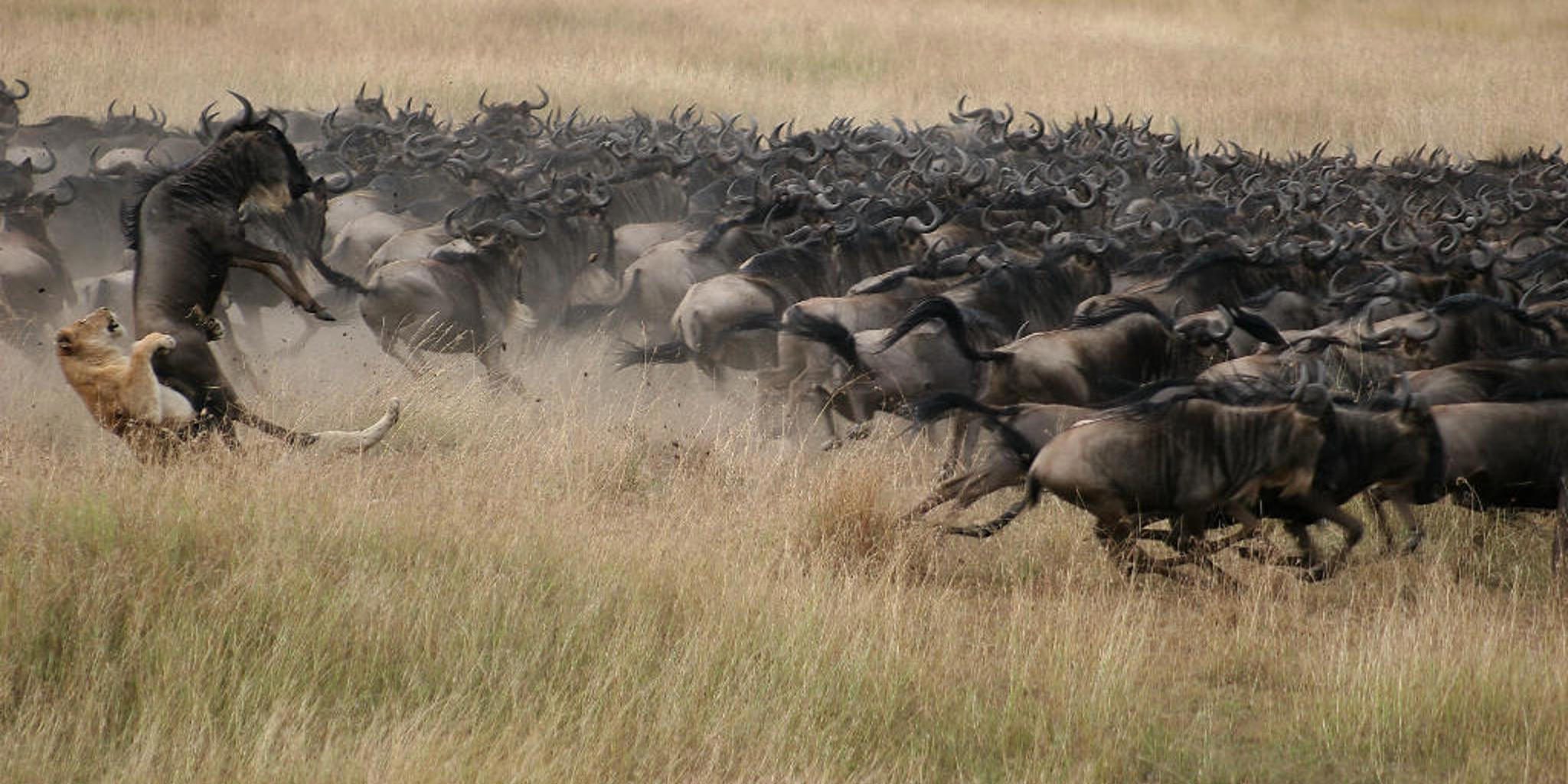
Predator–Prey Dynamics
The Wildebeest Migration is one of nature’s most dramatic illustrations of predator–prey interactions. The movement of millions of herbivores attracts Africa’s most formidable predators. Lions, hyenas, cheetahs, leopards, crocodiles, and wild dogs all become central participants in this complex web of survival.
A notable fact is that the Migration sustains one of the highest densities of predators in the world. The Serengeti’s lion population thrives in large part because of the abundant presence of wildebeest. For predators, the Migration represents a feast, while for the herbivores, it symbolizes survival through numbers.
The river crossings are particularly dangerous, with crocodiles playing a major role in the drama. These reptiles may lie dormant for months, conserving energy and waiting for the exact moment the herds plunge into the water. The spectacle that unfolds during the crossings is fueled by the contrasting forces of hunger and fear, instinct and strategy, chaos and determination.
This cycle ensures ecological balance, reinforcing the importance of the Migration in maintaining predator populations and promoting healthy natural selection among the herbivores.
River Crossings
Few natural events rival the intensity of the Mara River crossings, a fact that has made them one of the most filmed and photographed wildlife moments in the world. The sight of thousands of wildebeests gathering, hesitating, and finally plunging into the swirling waters forms a scene so emotionally charged that it leaves viewers both exhilarated and humbled.
These crossings are unpredictable. They may occur at any time of day, at various river points, and often involve repeated attempts as herds move back and forth across the river. The confusion, the fear, the splashing, and the raw instinct on display elevate the crossings into a symbol of the Migration itself.
Another remarkable fact is the strategic intelligence displayed by the herd. Wildebeests often wait for zebras to cross first, as zebras possess superior eyesight and can detect predators more effectively. This interdependence underscores the collaborative survival strategies that shape the Migration.
The Role of Zebras and Gazelles
It is a common misconception that the Great Migration involves only wildebeests. In truth, zebras and gazelles form an essential part of the migrating community. Zebras often lead the herd due to their stronger grazing abilities and better vision. Their presence helps locate safe paths, while wildebeests follow because they benefit from the shorter grasses that zebras leave behind.
Gazelles complement this partnership by feeding on the youngest shoots left after wildebeests graze. Together, these species form an integrated grazing system that maximizes resource efficiency and minimizes competition. This symbiotic relationship showcases how different species collaborate naturally to ensure survival across challenging landscapes.
The Migration as an Ecological Engine
One of the most profound facts about the Wildebeest Migration is its ecological importance. The constant movement of millions of animals influences soils, vegetation, rivers, and the entire ecological balance of the Serengeti–Mara ecosystem.
The hooves of the wildebeests churn the soil, aerating it and promoting grass growth. Their droppings enrich the land with nutrients, improving soil fertility. Their grazing patterns shape grassland composition and prevent overgrowth. Essentially, the Migration acts as a natural cultivation mechanism that maintains healthy grasslands and supports the survival of numerous other species.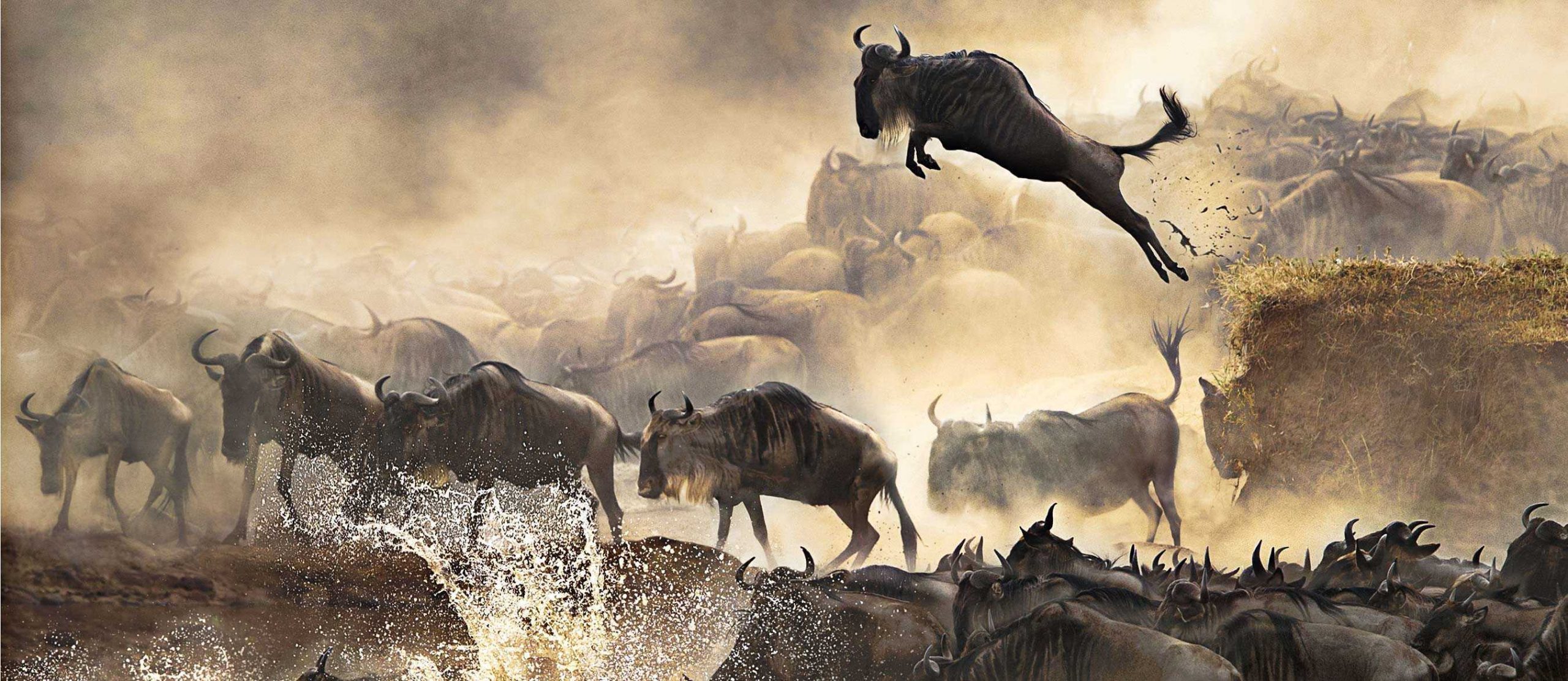
Without the Migration, the Serengeti would not be the iconic landscape it is today. Its health depends on the cyclical movement of ungulates, which sustain biodiversity in a delicate yet powerful equilibrium.
The Mystery of Navigation
One of the most intriguing facts is that no definitive scientific explanation exists for how wildebeests navigate such vast distances with remarkable precision. Theories suggest that they may rely on a combination of herd instinct, memory, environmental cues, and even the Earth’s magnetic fields. What remains clear is that their ability to follow the cycle with such consistency demonstrates a biological intelligence shaped through generations of evolution.
The Endless Circular Journey
Another fascinating fact is that the Great Migration is not a linear event. It is circular and perpetual. There is no specific starting point because the cycle continues without a pause. The journey from the southern Serengeti to the northern Mara and back again is repeated endlessly. Calving leads to movement, movement leads to crossings, crossings lead to dispersal, and dispersal leads back to the birthing grounds.
This cycle symbolizes resilience and reflects the adaptability of wildlife under ever-changing environmental conditions. It also highlights the interconnectedness of habitats that must remain protected for the Migration to continue.
Human Involvement
Perhaps one of the most important facts about the Migration today relates to the role humans play in preserving this phenomenon. The Migration is dependent on vast, unfenced landscapes, regulated land use, effective conservation policies, and collaborative efforts between Tanzania and Kenya.
Human populations around the ecosystem depend on tourism revenue generated by Migration safaris, ensuring that conservation is not only a biological necessity but also an economic cornerstone. Conservationists continually work to protect migration corridors, regulate tourism impact, and prevent poaching and habitat fragmentation.
Sustainable tourism, community engagement, and protective legislation form the backbone of efforts to preserve this global natural treasure.
The Wildebeest Migration as a Testament to the Wild
The Wildebeest Migration continues to capture global wonder because it represents more than just movement. It reveals timeless truths about nature, resilience, survival, and ecological interdependence. Each fact—from synchronized births to deadly crossings, from symbiotic relationships to instinctual navigation—paints a portrait of wild Africa at its purest and most profound.
Travellers who witness this marvel find themselves transformed by the scale, emotion, and ancient rhythm of the experience. For those inspired to follow the journey across Tanzania and Kenya’s wilderness, it is highly recommended to book your African safaris through Wildlife Safaris Tanzania, ensuring expert guidance and immersive access to the heart of the Great Migration.

